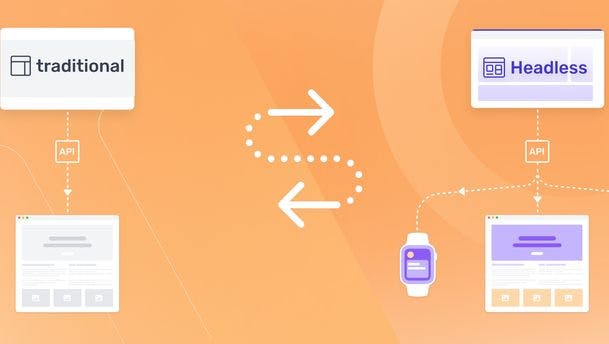The rise of headless CMSs
Headless CMS solutions are becoming essential for modern, content-driven companies. Unlike traditional CMSs, which only manage content for one channel, headless CMSs allow content to be published across multiple channels. Currently, 63% of organizations use a headless CMS, and 91% plan to increase their usage in the next year. As digital needs grew, traditional systems couldn't keep up, leading to the evolution of more flexible, data-driven systems.
A headless CMS separates the content storage ('body') from its presentation ('head'). This lets editors and developers focus on creating content while the CMS handles distribution through APIs. This means content can be easily shared across various platforms and devices without being tied to a specific front-end technology, giving you the freedom to present content wherever you need it.

Benefits of a Headless CMS
Headless technology comes with many benefits, such as:
- Developer flexibility: Front-end developers can choose whatever framework works for them. Back-end developers can focus on structuring content the right way.
- Multichannel publishing: Editors can create, manage and publish content for all channels at once.
- Better security: A headless CMS is decoupled from its presentation layer so there is a smaller area of attack.
- Scalability: Headless architecture is great for delivering content at scale.
Limitations of a headless CMS
Many content teams still use a headless CMS to create, manage and publish their content. However, in this oversaturated world of content, it's getting harder to keep your audience's attention. Over the years, our digital world has transformed more and more into a data-driven landscape where customers seek a personal approach. If you want to adapt to the data-driven era, a ‘regular’ headless CMS has its limitations.








